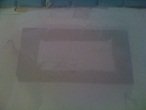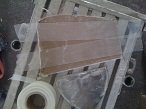
How to Repair Holes in the Wall
There are many reasons you may need to repair holes in drywall. Sometimes it is because of scheduled plumbing or electrical work that left a hole in the drywall. At other times, holes need to be repaired because of unexpected damage.
Regardless of the reason, the techniques discussed below can be used to repair holes in drywall. Different techniques work better than others depending on the size of the hole and whether it is in the ceiling or the wall.
This article outlines a few methods for repairing holes in the wall. The separate articles linked below describe in detail how to use these methods to patch drywall. Any of these techniques can be used for holes up to 13 inches.
If a hole is larger than 13 inches it is best to cut the surrounding drywall back to the nearest available stud and install a piece of drywall to fit. Repairing holes over 13 inches in size requires adequate backing that is attached to the underlying structure, rather than the surrounding drywall. The methods outlined below require the surrounding drywall to be stable and provide firm support.

Strapped backing patch
The first method can be referred to as a strapped backing patch. This is the strongest method you can use for patching medium to large holes in the wall. For drywall to be truly strong it needs to have a solid backing.
This method involves using a short length of metal or wooden stud. The wood or metal stud is used as a backing strap that is placed behind the hole. It extends past the edges of the hole and is secured to the existing drywall. The wall patch is then screwed onto this newly placed backing-strap.
This is the best type of drywall patch for holes in ceilings since it does not sag. Other types of drywall repair methods can sag under the weight of the patch or the mud that is applied. However, a strapped backing patch is firm and stable, even on the ceiling.

California drywall patch
The second method is popularly known as a California Drywall Patch. Some refer to this method as a Butterfly Patch or Butterfly Band-Aid. A California patch works well for small holes. Holes from door nobs or electric boxes are good examples of holes that can be repaired using a California Patch.
If the hole is larger than 8" x 8" you may consider using the strapped backing method above. A California patch is not well suited for holes in ceilings. This type of patch is best suited for covering up small square holes such as where an old outlet box was removed.

Hammock Patch or Ohio Drywall Patch
The third method is a versatile technique of patching drywall that works best with small to medium size holes of up to 13 inches in size. It is referred to as either an Ohio patch since it originated in northeast Ohio or a hammock patch since the backing resembles a hammock.
The hole you are repairing does not need to be square to use an Ohio patch. A hammock patch can be used to repair holes of any shape. If the drywall that was removed is still available, you can usually reuse it with this method.
There are challenges to using an Ohio patch to repair holes in ceilings. Hammock patches can tend to sag under the weight of the mud that is applied. However, if certain precautions are taken when placing the patch it can even be used on small holes in the ceilings.
